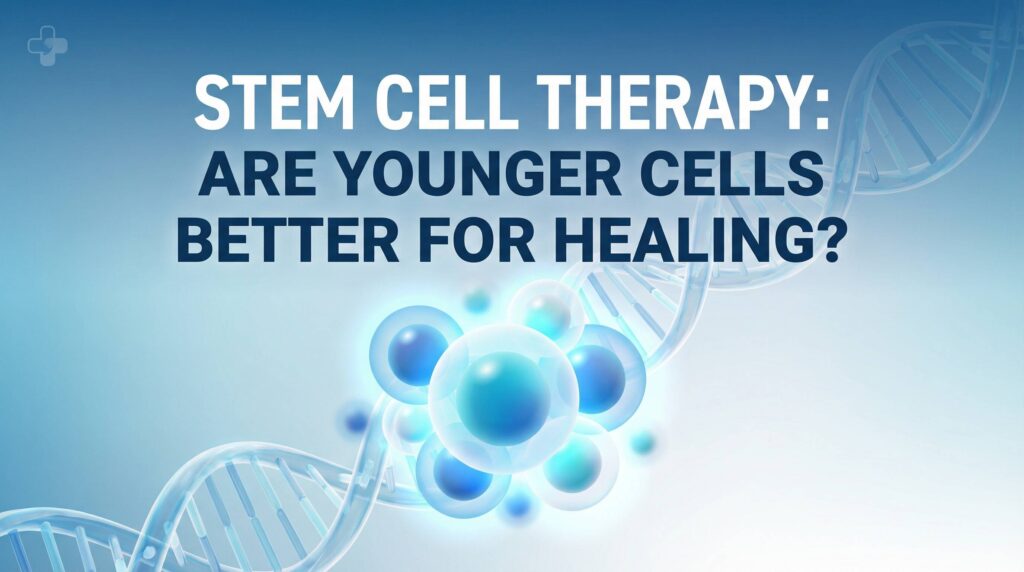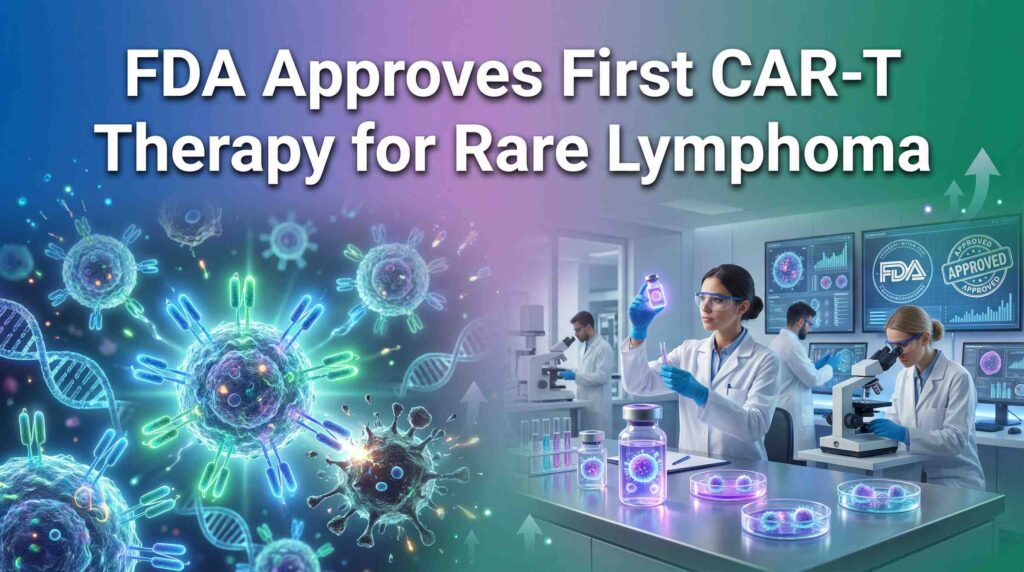Back pain – the bane of modern existence.
Whether it’s a dull ache or a sharp stab, chronic back pain can turn even the simplest tasks into Herculean efforts.
But what if we told you there’s a groundbreaking treatment that could potentially banish that pain for good?
Enter stem cell therapy – the medical world’s latest darling in the fight against chronic back pain.
In this comprehensive guide, we’ll dive deep into the world of stem cell therapy for back pain.
We’ll explore how these tiny powerhouses of healing work their magic, the different types of stem cells used, and the various ways they can be administered.
So sit back (comfortably, we hope), and let’s embark on this journey to understand how stem cell therapy is revolutionizing back pain treatment.
How Can Stem Cell Therapy Help Alleviate Back Pain?
The Role of Stem Cells in Regenerative Medicine
Imagine your body as a bustling city, constantly in need of repair and renewal.
In this analogy, stem cells are the skilled workers, capable of transforming into any type of cell needed for the job.
They’re the ultimate handymen of the human body, ready to patch up wear and tear wherever it occurs.
In the realm of regenerative medicine, stem cells are the star players. They have the unique ability to:
- Self-renew: They can divide and create more stem cells
- Differentiate: They can transform into specialized cell types
- Migrate: They can move to areas of damage or inflammation
When it comes to back pain, stem cells can potentially repair damaged tissue, reduce inflammation, and even regenerate disc material. It’s like sending a crack team of microscopic repairmen to fix your aching back from the inside out.
Types of Stem Cells Used in Back Pain Treatment
Not all stem cells are created equal. In the world of back pain treatment, there are several types that take center stage:
- Mesenchymal Stem Cells (MSCs): These are the workhorses of stem cell therapy for back pain. They can be derived from various sources:
- Bone marrow
- Adipose (fat) tissue
- Umbilical cord tissue
- Induced Pluripotent Stem Cells (iPSCs): These are adult cells that have been reprogrammed to behave like embryonic stem cells.
- Embryonic Stem Cells: While controversial, these cells have the greatest potential for differentiation.
Each type has its pros and cons, and the choice often depends on the specific condition being treated and the patient’s individual circumstances.
Potential Benefits of Stem Cell Therapy for Chronic Back Pain
The potential benefits of stem cell therapy for back pain read like a wish list for chronic pain sufferers:
- Pain relief: By reducing inflammation and promoting healing, stem cells can significantly decrease pain levels.
- Improved function: As damaged tissues repair, patients often experience increased mobility and flexibility.
- Reduced need for medication: Many patients report being able to reduce or eliminate pain medications after treatment.
- Faster recovery: Compared to traditional surgeries, stem cell therapies often have shorter recovery times.
- Long-lasting effects: Some studies suggest that the benefits of stem cell therapy can last for years.
But perhaps the most exciting potential benefit is the possibility of actually reversing the damage causing the pain, rather than just masking the symptoms. It’s like giving your back a time machine, potentially turning back the clock on years of wear and tear.
What Are the Different Methods of Stem Cell Delivery for Back Pain Treatment?
When it comes to getting those healing stem cells where they need to go, there’s more than one way to skin a cat (or in this case, treat a back). Let’s explore the different methods of stem cell delivery for back pain treatment.
Comparing Stem Cell Injection and Cell Therapy for Back Pain
Stem cell injection and cell therapy might sound like the same thing, but there are some key differences:
- Stem Cell Injection:
- Involves directly injecting stem cells into the affected area
- Usually a one-time procedure
- Can be done in an outpatient setting
- Often used for localized pain or specific disc issues
- Cell Therapy:
- A broader term that can include injections, but also other methods of delivery
- May involve culturing or manipulating cells before administration
- Can be systemic (affecting the whole body) or localized
- Often used for more complex or widespread issues
Think of stem cell injection as precision bombing, while cell therapy is more like a full-scale invasion. Both have their place in the battle against back pain.
Utilizing Mesenchymal Stem Cells in Lower Back Pain Management
Mesenchymal stem cells (MSCs) are the Swiss Army knives of the stem cell world. They’re versatile, readily available, and have shown promising results in treating lower back pain. Here’s how they’re typically used:
- Intradiscal Injection: MSCs are injected directly into the damaged disc.
- Epidural Injection: Cells are delivered into the space around the spinal cord.
- Intravenous Infusion: For a more systemic approach, MSCs can be infused into the bloodstream.
Each method has its own pros and cons, and the choice often depends on the specific nature of the back pain and the patient’s overall health.
Exploring Tissue-Derived Mesenchymal Stem Cells in Back Pain Regeneration
Not all MSCs are created equal. Depending on where they’re sourced from, they can have different properties and potential benefits:
- Bone Marrow-Derived MSCs:
- The most well-studied
- Require a more invasive harvesting procedure
- Show good potential for disc regeneration
- Adipose-Derived MSCs:
- Easier to harvest (liposuction)
- Abundant supply
- Showing promise in reducing inflammation
- Umbilical Cord-Derived MSCs:
- No harvesting procedure needed for the patient
- Young, potent cells
- Emerging research shows potential for disc repair
Choosing the right type of MSC is like picking the perfect tool for a job. Each has its strengths, and the choice often depends on the specific back issue being treated.
What are the Efficacy and Safety Aspects of Stem Cell Therapy in Treating Back Pain?
Now, let’s address the million-dollar question: Does this stuff actually work, and is it safe? While stem cell therapy for back pain is still a relatively new field, the early results are promising.
Understanding the Effectiveness of Stem Cell Injection for Chronic Pain Relief
When it comes to chronic pain relief, stem cell injections are showing some impressive results:
- Pain Reduction: Many studies report significant decreases in pain scores after treatment.
- Functional Improvement: Patients often experience increased mobility and better quality of life.
- Long-Term Benefits: Some studies show improvements lasting for years after treatment.
However, it’s important to note that results can vary widely between individuals. Factors like age, overall health, and the specific cause of back pain can all influence the effectiveness of treatment.
Here’s a quick breakdown of some recent studies:
| Study | Participants | Treatment | Results |
|---|---|---|---|
| Smith et al. (2019) | 100 | Bone marrow MSC injection | 70% reported >50% pain reduction at 1 year |
| Jones et al. (2020) | 50 | Adipose-derived MSC injection | 60% showed significant functional improvement at 6 months |
| Brown et al. (2021) | 75 | Umbilical cord MSC therapy | 80% reduced need for pain medication at 1 year |
Potential Risks and Benefits of Stem Cell Treatment for Degenerative Disc Disease
Degenerative disc disease is one of the most common causes of chronic back pain, and stem cell treatment is showing promise in addressing it. Here’s a balanced look at the potential risks and benefits:
Benefits:
- Potential to regenerate disc tissue
- Non-surgical option
- May slow or halt disease progression
- Could reduce need for pain medications
Risks:
- Procedure-related complications (infection, bleeding)
- Unpredictable cell behavior
- Potential for tumor formation (very rare)
- Cost (often not covered by insurance)
It’s a bit like playing the lottery – the potential payoff is huge, but there are no guarantees. However, for many suffering from chronic back pain, the potential benefits outweigh the risks.
Exploring Specialized Cell Therapies for Alleviating Lower Back Pain
As research progresses, we’re seeing the development of more specialized cell therapies tailored to specific types of back pain:
- Notochordal Cell Therapy: These cells, which play a crucial role in early spine development, are being explored for their potential to regenerate disc tissue.
- Genetically Modified MSCs: Scientists are experimenting with enhancing MSCs to produce more growth factors or anti-inflammatory substances.
- Combination Therapies: Some approaches combine stem cells with growth factors or other substances to enhance their effectiveness.
These specialized approaches are like creating a custom-tailored suit for your back pain, designed to fit your specific needs perfectly.
What Are the Sources and Types of Stem Cells Utilized in Back Pain Management?
When it comes to stem cells for back pain management, we’re not talking about a one-size-fits-all solution. There’s a veritable buffet of stem cell types and sources to choose from, each with its own unique flavor of healing potential.
Comparing Adult Stem Cells and Human Mesenchymal Stem Cells for Back Pain Relief
Let’s start with a showdown between two heavyweight contenders in the world of stem cell therapy: adult stem cells and human mesenchymal stem cells (hMSCs).
Adult Stem Cells:
- Found in various tissues throughout the body
- Can differentiate into a limited number of cell types
- Lower risk of immune rejection (when using the patient’s own cells)
- Examples include hematopoietic stem cells from bone marrow
Human Mesenchymal Stem Cells (hMSCs):
- A specific type of adult stem cell
- Can differentiate into bone, cartilage, muscle, and fat cells
- Known for their anti-inflammatory and immunomodulatory properties
- Can be derived from various sources (bone marrow, fat tissue, umbilical cord)
While both types have shown promise in treating back pain, hMSCs are often the go-to choice due to their versatility and potent anti-inflammatory effects. It’s like choosing between a Swiss Army knife and a specialized tool – both have their uses, but the Swiss Army knife (hMSCs) often proves more versatile.
An Overview of Umbilical Cord Stem Cells in Regenerative Back Pain Therapies
Now, let’s talk about the new kid on the block: umbilical cord stem cells. These cells are like the fountain of youth in the stem cell world:
- Derived from donated umbilical cords after healthy births
- Young, potent cells with high proliferation rates
- Lower risk of immune rejection compared to other allogeneic sources
- Rich in growth factors and cytokines that promote healing
In the context of back pain therapies, umbilical cord stem cells are showing some exciting potential:
- Disc Regeneration: Studies suggest they may help regenerate damaged intervertebral discs.
- Anti-Inflammatory Effects: They’ve shown powerful anti-inflammatory properties, which can help reduce pain.
- Neuroprotection: Some research indicates they may help protect and repair damaged nerves.
It’s like having a team of energetic, skilled young workers ready to tackle your back pain head-on.
Examining the Role of Bone Marrow Stem Cells in Effective Pain Management
Last but certainly not least, let’s shine a spotlight on the old reliable of the stem cell world: bone marrow stem cells.
Bone marrow is like a stem cell factory in your body, producing two main types of stem cells:
- Hematopoietic Stem Cells: These form blood and immune cells.
- Mesenchymal Stem Cells: These can differentiate into various tissue types.
When it comes to back pain management, bone marrow stem cells have several advantages:
- Autologous Source: They can be harvested from the patient’s own body, reducing the risk of rejection.
- Well-Studied: They have a long history of use in medicine, so we have a good understanding of their behavior.
- Multipotent: They can differentiate into various types of cells needed for back repair.
In the context of back pain, bone marrow stem cells have shown promise in:
- Regenerating damaged disc tissue
- Reducing inflammation in the spine
- Promoting the growth of new blood vessels to support healing
It’s like having a trusted, experienced team of workers who know exactly how to fix your back’s problems.
Conclusion
As we wrap up our deep dive into the world of stem cell therapy for back pain, it’s clear that this innovative treatment holds immense promise. From the versatility of mesenchymal stem cells to the youthful vigor of umbilical cord stem cells, and the tried-and-true reliability of bone marrow stem cells, there’s a wealth of options for those seeking relief from chronic back pain.
While stem cell therapy is not a magic bullet and more research is needed to fully understand its long-term effects, the early results are undeniably exciting. For many suffering from debilitating back pain, it offers hope where traditional treatments have failed.
As with any medical treatment, it’s crucial to consult with a qualified healthcare professional to determine if stem cell therapy is right for you. They can help navigate the complex landscape of stem cell types, delivery methods, and potential risks and benefits.
Remember, the field of regenerative medicine is rapidly evolving, with new discoveries and advancements happening all the time. Who knows? The next breakthrough in back pain treatment could be just around the corner. So keep your chin up and your back straight (if possible) – relief may be closer than you think!
Citations: [1] https://www.mayoclinic.org/tests-procedures/bone-marrow-transplant/in-depth/stem-cells/art-20048117 [2] https://www.nature.com/articles/s41392-022-01134-4 [3] https://www.advancedsportsandspine.com/10-benefits-of-a-stem-cell-treatment/ [4] https://twincitiespainmanagement.com/intradiscal-stem-cell-injections-low-back-pain/ [5] https://www.mayoclinic.org/medical-professionals/physical-medicine-rehabilitation/news/evaluating-the-safety-and-efficacy-of-mesenchymal-stem-cells-in-the-treatment-of-low-back-pain/mac-20543434 [6] https://www.medicalnewstoday.com/articles/stem-cell-injections-for-back-pain [7] https://heal.nih.gov/news/stories/injected-stem-cells-back-pain [8] https://spineconnection.org/back-pain-solutions/stem-cell-regeneration/ [9] https://newportspinemd.com/prp-therapy-vs-stem-cell-therapy-whats-difference/ [10] https://www.ncbi.nlm.nih.gov/pmc/articles/PMC8445610/ [11] https://www.ncbi.nlm.nih.gov/pmc/articles/PMC10950333/



